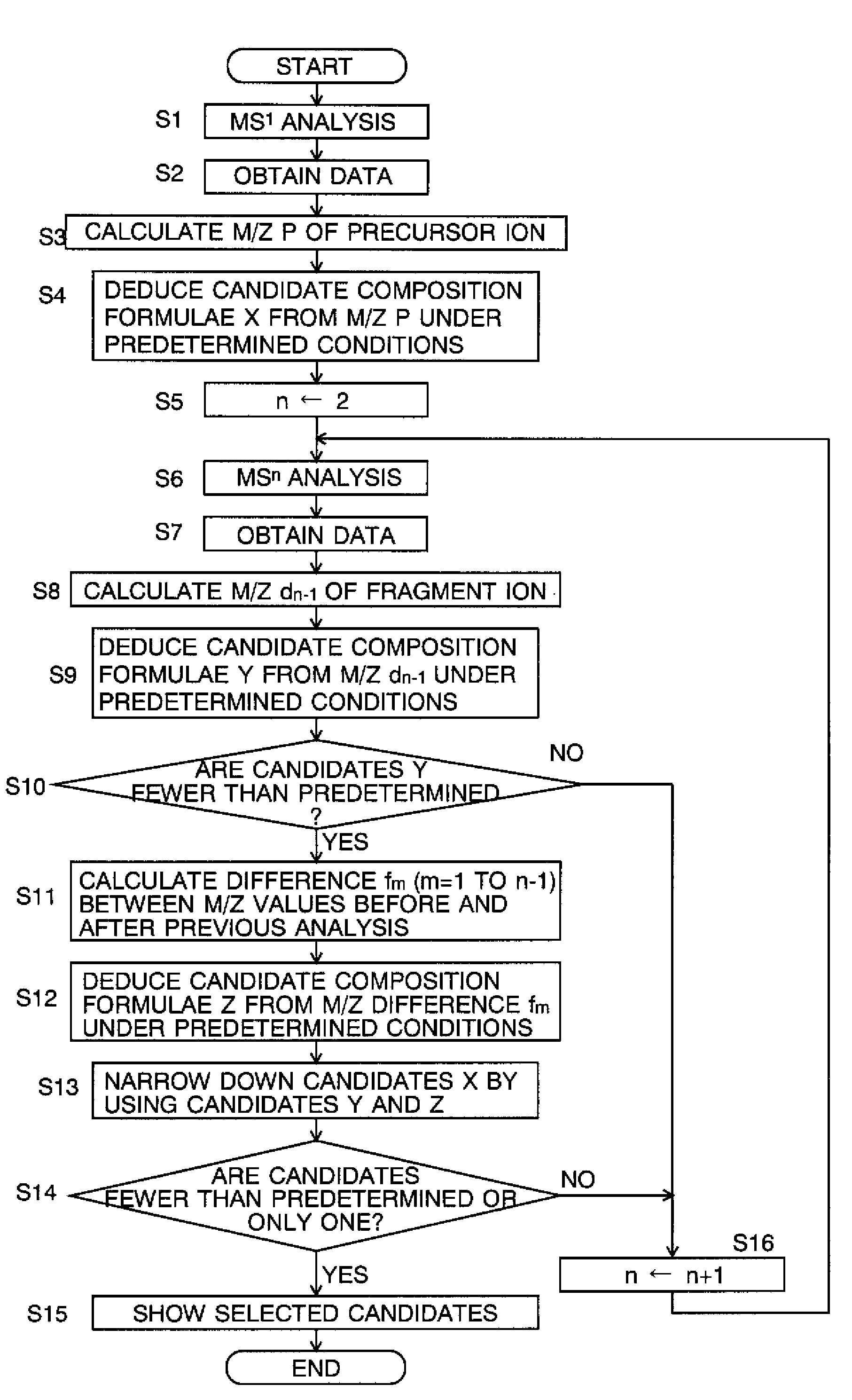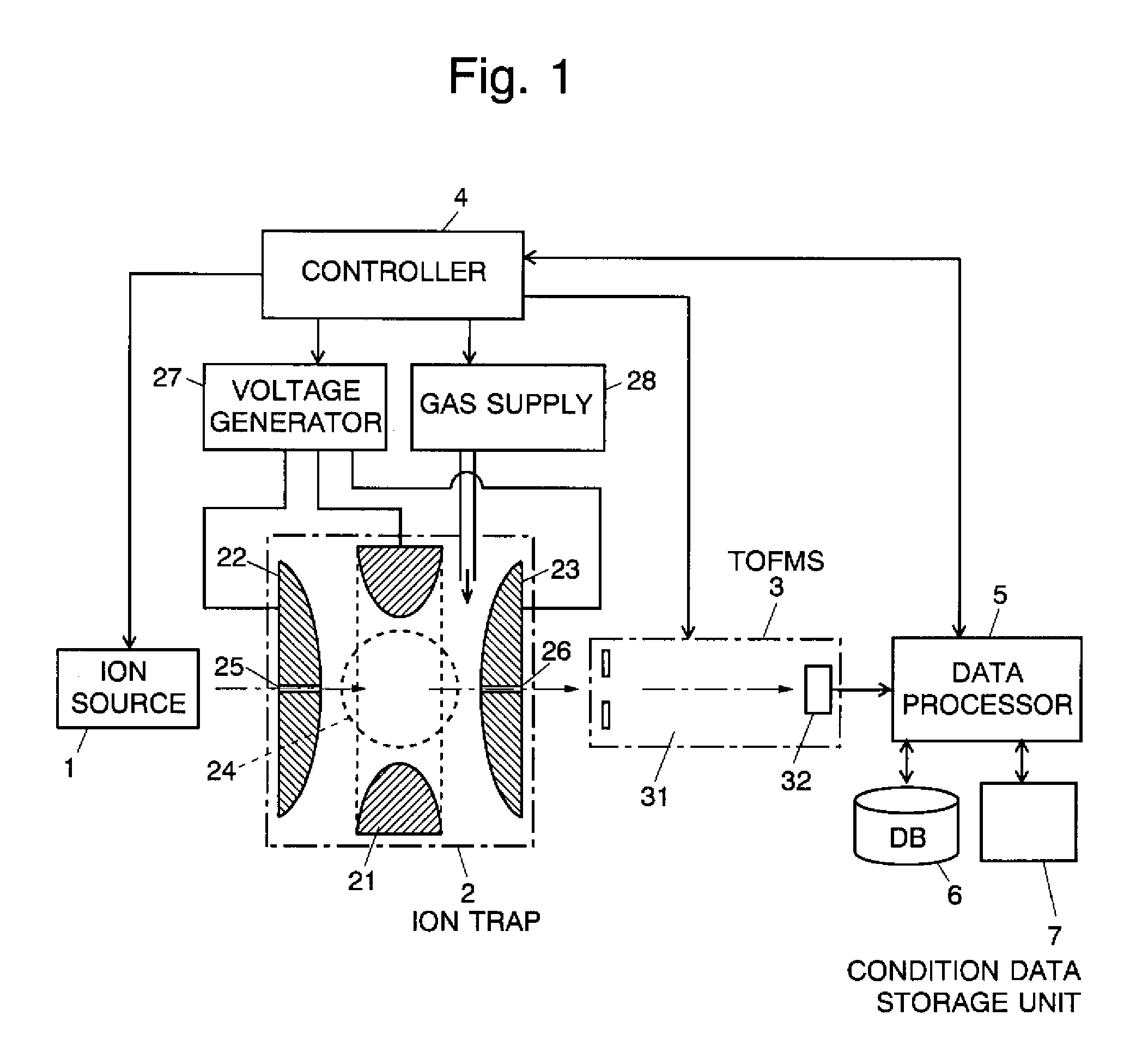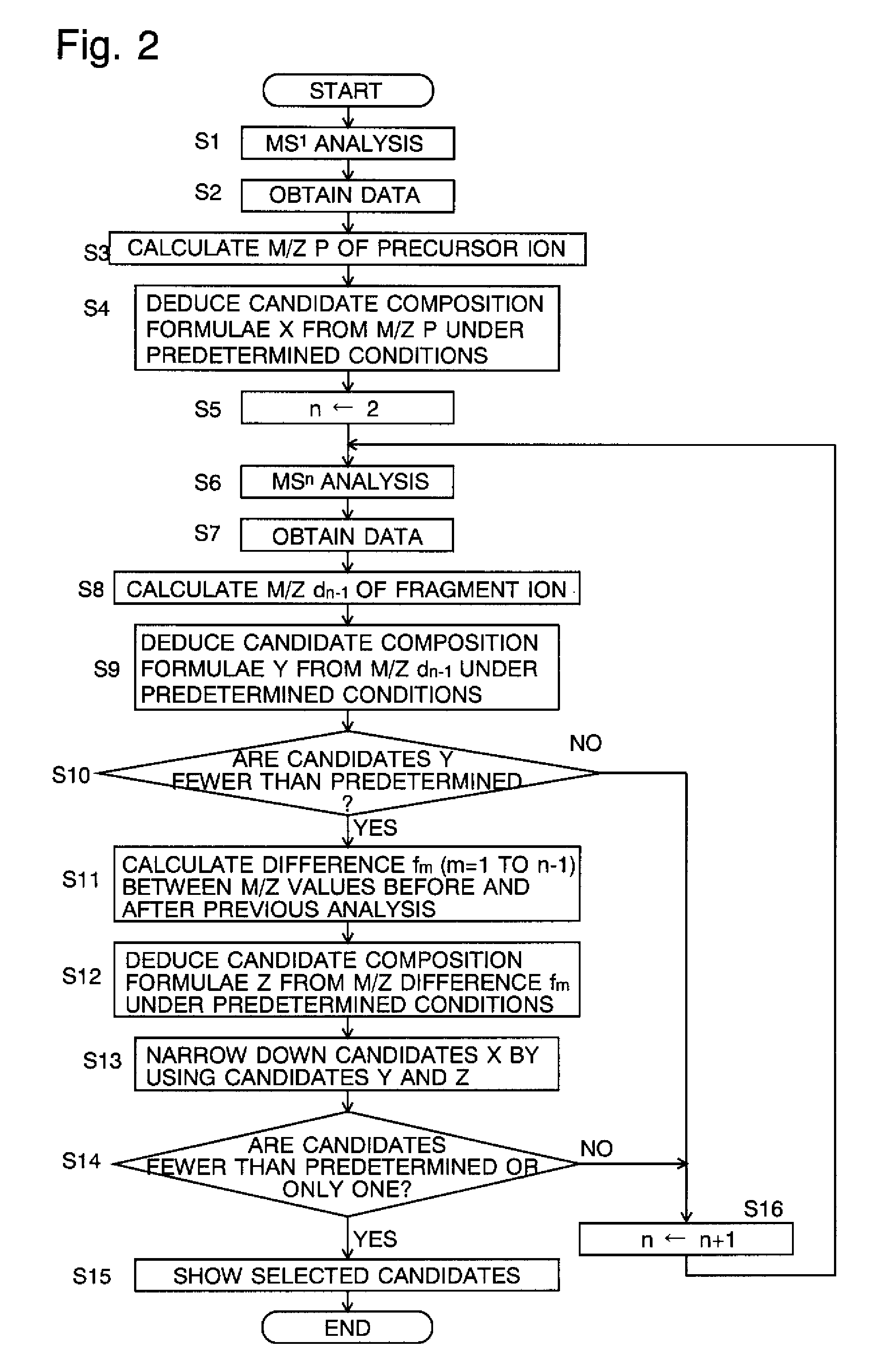Mass-analyzing method
a mass spectrometer and mass spectrometer technology, applied in chemical methods analysis, separation processes, instruments, etc., can solve the problems of difficult to determine the composition of the sample concerned, samples having special characteristics cannot be broken into ions, etc., to narrow down the candidates y, and the mass accuracy is not so high.
- Summary
- Abstract
- Description
- Claims
- Application Information
AI Technical Summary
Benefits of technology
Problems solved by technology
Method used
Image
Examples
embodiment 1
[0090]Estimating the composition of the sample according to the flow chart of FIG. 2 facilitates the narrowing down of the candidate composition formulae of the precursor ion, as can be seen in the following example.
[0091]Suppose that the mass P of the precursor ion created by ionizing a target sample is P=171.066 (u: atomic mass unit) is subjected to a dissociating process in which the precursor ion is dissociated into the following five kinds of fragment ions by carrying out the dissociating operation five times: d1=153.056, d2=125.021, d3=97.027, d4=69.032 and d5=41.038. In this case, the differences fm between the mass of the precursor or fragment ion in the MSn−1 analysis and that of the fragment ion in the MSn analysis will be as shown in FIG. 5.
[0092]Now, suppose that the kinds and maximum numbers of the atoms are as follows: 14 atoms of carbon (C), 30 atoms of hydrogen (H), 10 atoms of oxygen (O) and 10 atoms of nitrogen (N), and that the mass accuracy is 0.02 u. Under these...
embodiment 2
[0109]This section describes a specific example of the steps of narrowing down the candidate composition formulae of the precursor ion by using combinations of the candidate composition formulae of the fragment ion and that of the desorption ion in the mass-analyzing method according to the second mode of the present invention.
[0110]Suppose that the mass P of the precursor ion produced by ionizing the target ion is 150.01 (u) and the mass d1 of the fragment ion produced by dissociating the precursor ion one time is 100.0 (u). The difference f1 between the mass of the precursor ion and that of the fragment ion is P−d1=50.01 (u). Now, let CF(P), CF(d1) and CF(P−d1) denote the candidate compositions of the precursor ion, fragment ion and desorption ion, respectively, and CF(d1)*CF(P−d1) denote the combinations of the candidate composition formulae CF(d1) of the fragment ion and the candidate composition formulae CF(P−d1) of the desorption ion.
[0111]Furthermore, the following conditions...
PUM
 Login to View More
Login to View More Abstract
Description
Claims
Application Information
 Login to View More
Login to View More - R&D
- Intellectual Property
- Life Sciences
- Materials
- Tech Scout
- Unparalleled Data Quality
- Higher Quality Content
- 60% Fewer Hallucinations
Browse by: Latest US Patents, China's latest patents, Technical Efficacy Thesaurus, Application Domain, Technology Topic, Popular Technical Reports.
© 2025 PatSnap. All rights reserved.Legal|Privacy policy|Modern Slavery Act Transparency Statement|Sitemap|About US| Contact US: help@patsnap.com



